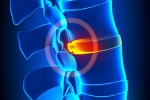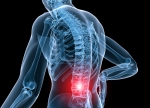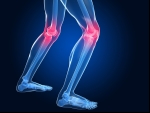Home »
Blog » Pain Management
| Stem Cell, PRP, Acupuncture in Queens & Long Island, New York
Pain Management | Stem Cell, PRP, Acupuncture in Queens & Long Island, New York
If you only compared dry needling and acupuncture with a photo, you might be stumped to identify each. Both acupuncture and dry needling use thin, stainless steel needles. For both practices, needles are inserted into the skin and both also claim to treat pain. That’s where the similarities end. Unique qualities help differentiate the two. One practice has been used for thousands of years as an alternative treatment and has some solid research of effectiveness. The other’s been adopted in the last couple of decades.
Read more
Many treatment options for low back pain can be tailored to an individual patient’s needs. Treatments include care administered at home, medicinal remedies, alternative care, or even surgery. Depending on the patient’s diagnosis, some treatments may be more effective than others. Many people find that a combination of treatments is best.
Read more
Spinal discs degenerate for a variety of reasons. Cells within a disc can die naturally as we age, but the process is generally exacerbated by genetics, obesity, and smoking. Traditional treatment for lumbar degenerative disc disease includes over-the-counter pain and anti-inflammatory medications, physical therapy, spinal mobilization, and surgery. However, the use of stem cells as a treatment has been rapidly gaining popularity.
Read more
Acupuncture is a complementary therapy that’s a part of traditional Chinese medicine (TCM). It originated in China and has been around for over 2,500 years. It’s a technique used to balance the flow of energy, also known as life force, chi, or qi. Qi is thought to flow through pathways in your body. The goal of acupuncture is to remove energy blockages and balance your energy flow, which helps to regulate your emotional, mental, and physical health.
Read more
Obtaining an accurate diagnosis that identifies the underlying cause of the pain, and doesn’t just correlate to the symptoms, is important in guiding treatment. As a foundation of the diagnostic process, the patient provides a detailed description of symptoms and medical history. From this information, a doctor will usually have a general idea of the source of the patient’s pain.
Read more
Degenerative disc disease is one of the most common causes of low back and neck pain, and also one of the most misunderstood. Simply put, degenerative disc disease refers to symptoms of back or neck pain caused by wear-and-tear on a spinal disc. In some cases, degenerative disc disease also causes weakness, numbness, and hot, shooting pains in the arms or legs (radicular pain). Degenerative disc disease typically consists of a low-level chronic pain with intermittent episodes of more severe pain.
Read more
Low back pain might begin as acute due to an injury but can become chronic. Managing pain appropriately at an early stage can help limit symptoms in both time and severity. Identifying the symptoms and getting a diagnosis that pinpoints the underlying cause of the pain is the first step in obtaining effective pain relief.
Read more
A dysfunction in your cervical spine can lead to pain that radiates through your shoulders and down your arms. If this is the case for you, an injection of cortisone steroid can be a great short-term solution. Read on for a step-by-step overview of this common procedure: In your cervical spine (neck), there is a sac called the dura that contains your nerve roots, cerebrospinal fluid, your spinal cord, and nerves.
Read more
Most commonly, mechanical issues and soft-tissue injuries are the cause of low back pain. These injuries can include damage to the intervertebral discs, compression of nerve roots, and improper movement of the spinal joints. The single most common cause of lower back pain is a torn or pulled muscle and/or ligament.
Read more
It's Complicated - Your knees have lots of moving parts, and you use them a lot, so lots of things can go wrong, like, too much of one kind of motion, especially if you don't work up to it, it can lead to "overuse" injuries. Simple wear and tear is a problem, especially as you age. Accidents can crack bones and tear tissue. With some conditions, your body attacks its own joints. Your doctor can help you sort out what's going on with your knee when it doesn't feel right.
Read more
Love this Post? Spread the World






















